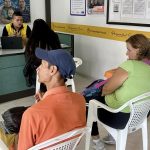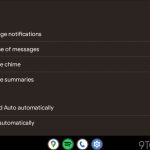The document that will guide the work of the October Assembly, the result of the consultation that began worldwide in 2021, was presented in the Vatican. of women (including the diaconate), the relationship between interreligious dialogue and persecution and the concrete modalities of a synodal exercise of authority in the Church. “But what matters is developing a method to walk together.”
Vatican City () – From a term “in itself abstract or theoretical” to “a concrete experience”. Guided by a method, in which even discussing “problems, resistance, difficulties and tensions” becomes a moment of communion. Such is the face of synodality that emerges from the Instrumentum Laboris for the first session of the XVI General Assembly of the Synod of Bishops, which was presented today at a press conference in the Vatican with a view to the meeting that will bring together bishops in Rome for three weeks and (for the first time, by decision of the Pope Francisco) 70 lay, consecrated and priest delegates from all over the world.
The Instrumentum Laboris is the synthesis of that path of listening to which the pontiff summoned the entire Church from 2021 to reflect on the theme “For a synodal Church: communion, participation and mission”. Each diocese was invited to give a voice to all, with special attention to the poor and those who usually do not have a voice in Christian communities. And the reflections that were collected came together in summary documents prepared first at the national level and then shared in special assemblies that were held in recent months at the continental level (those of Asia in Bangkok, last February). .
The final result is the text that was released today and that will serve as a guide for the October meeting. It is an itinerary that includes the questions on which the delegates will have to confront each other. But starting from two fundamental points that precisely the initial phase that has lasted more than two years throughout the world has strongly highlighted.
On the one hand, some “characteristic signs” of a synodal Church: a community that listens, that knows how to ask for forgiveness, that is not afraid of internal differences and -above all- that is clear about the challenge of keeping together the vocation to love everyone. with fidelity to the truth. On the other, a way of proceeding, “conversation in the Spirit”: a method that has been tested in the local stages of the synodal process, where silence and prayer are intertwined with confrontation. In this spirit, after giving the floor to each one, the first step is not to clarify one’s own thoughts but to start from the good things that the other has said. And it is a path that helps to avoid ruptures, to seek in a community way the steps to which the Holy Spirit calls the Church.
Only after having clearly outlined this framework in its first part, the Instrumentum Laboris outlines in the second part three “priority questions” for the Church today, starting from the terms pointed out by Pope Francis himself in relation to the theme: a communion called to radiate, the co-responsibility of all in the mission and the paths of participation that also take into account synodality in the exercise of authority. For each of these three dimensions, the Instrumentum Laboris develops five sheets full of questions that, when going through them, raise many extremely concrete issues that the synodal path has brought to light.
For example, the whole issue of the relationship between Western culture and other cultures within the Church, or the question of forms of discrimination within the same ecclesial communities. The question of the role of women in a synodal Church is strongly posed (and the Instrumentum Laboris expressly states that “the majority of the continental Assemblies and the syntheses of numerous Episcopal Conferences ask that the question of women’s access to the diaconate”). Among the questions about the relationship with other religions, he asks “how to bear witness to the Gospel in countries where the Church is a minority without weakening the witness of faith, but also without lightly exposing Christians to threats and persecution”. Regarding the modalities on the exercise of authority in the Church, the possibility of “more participatory selection procedures, especially for bishops” is mentioned.
So many questions, to which, however, the Synod will not necessarily give answers immediately. “In this case, the issue is synodality, not individual issues,” the Secretary General of the Synod, Card. Mario Grech, and the general relator, card. Jean-Claude Hollerich. The important thing is that the Assembly indicates a way of walking together and listening, even on issues where there are different opinions, what the Holy Spirit is saying to the Church”.
Meanwhile, in the October Assembly there will also be a novelty on a physical level: due to the number of participants, but also to the way of working, it will not take place in the synodal hall but in the Paul VI room, the large room where the pontiff holds general audiences. And here too, in some sessions, the method of debate tables that has already been used in the continental Assemblies will be adopted: small groups of bishops, priests and laity who reflect together. Even in the Vatican.











